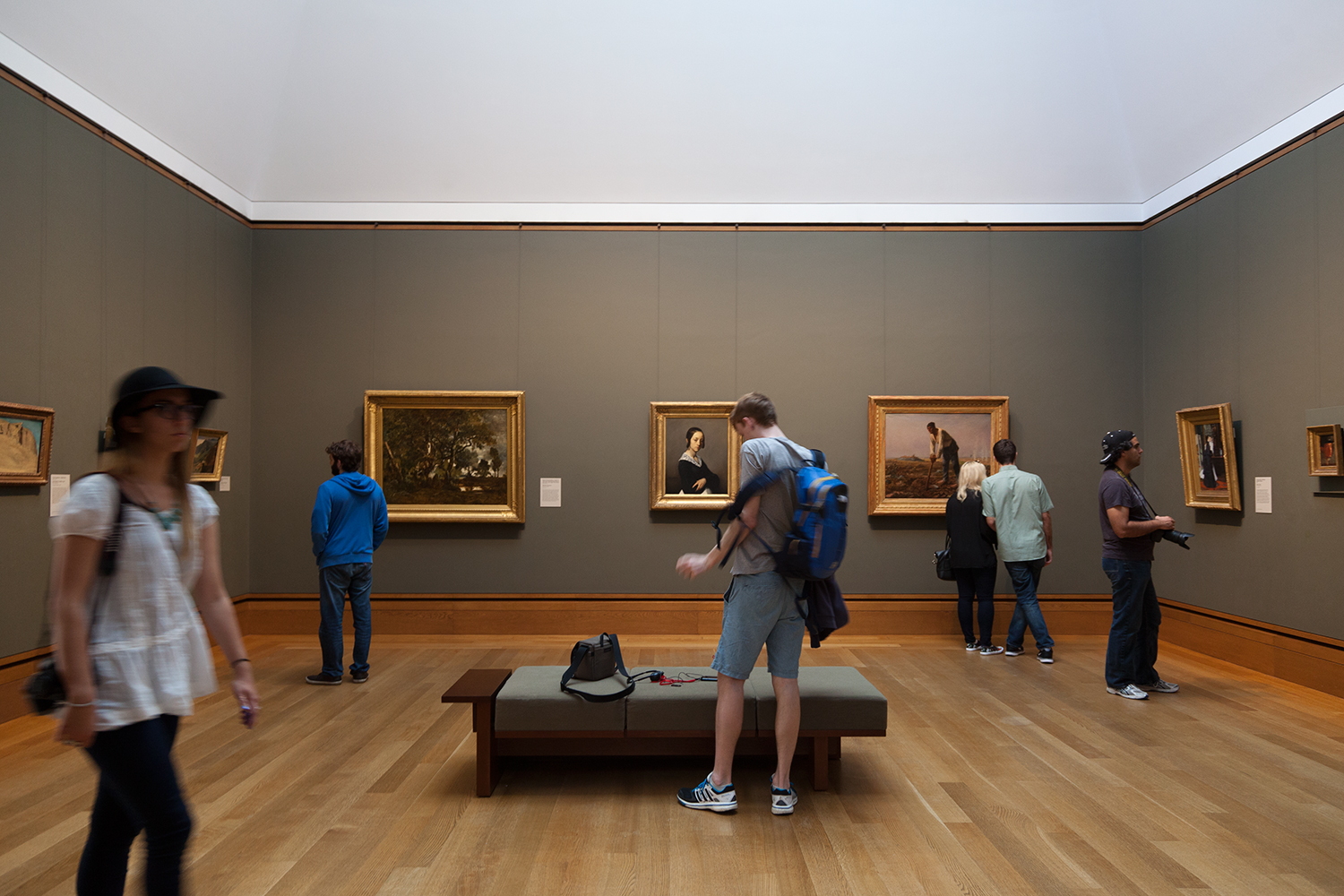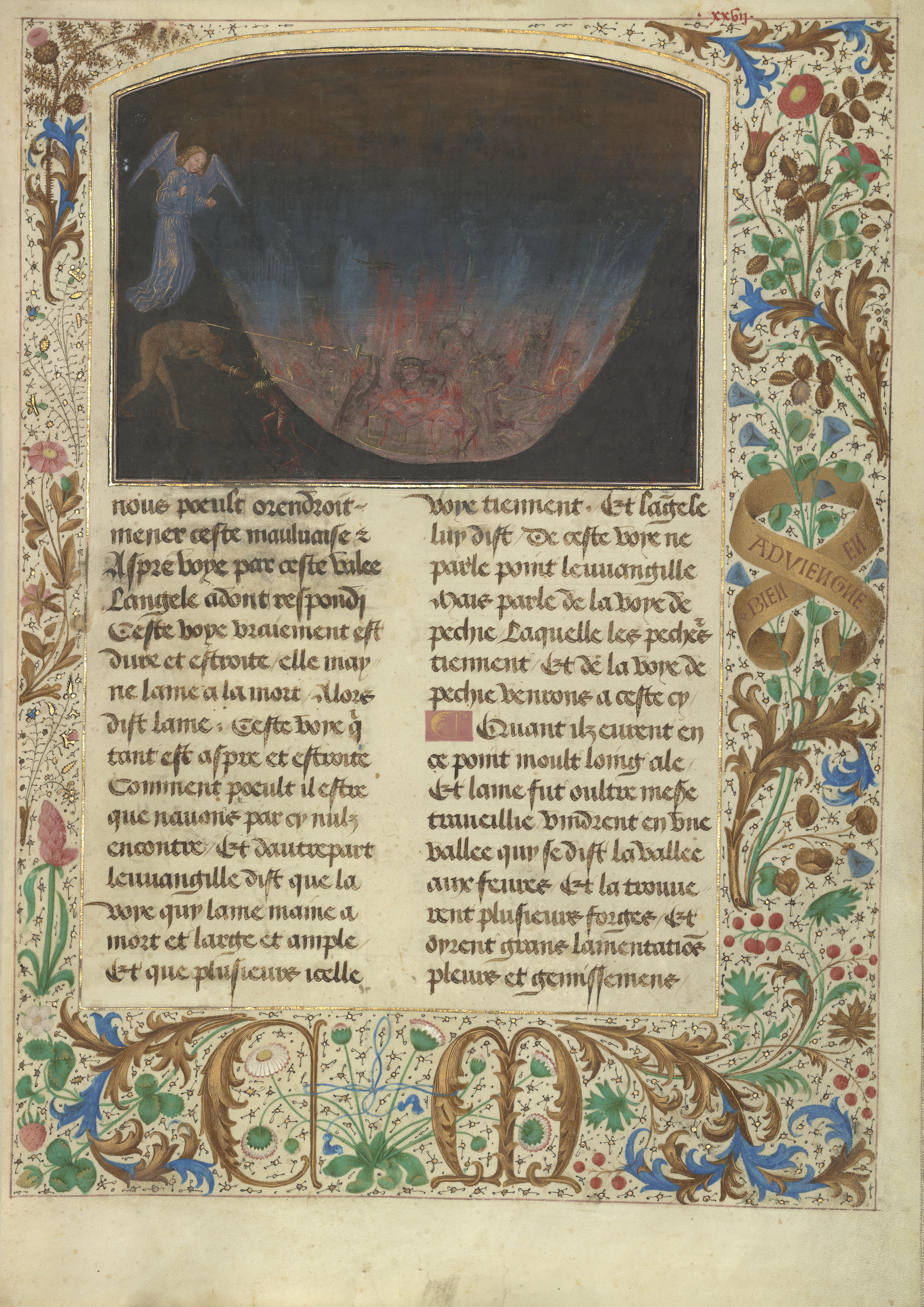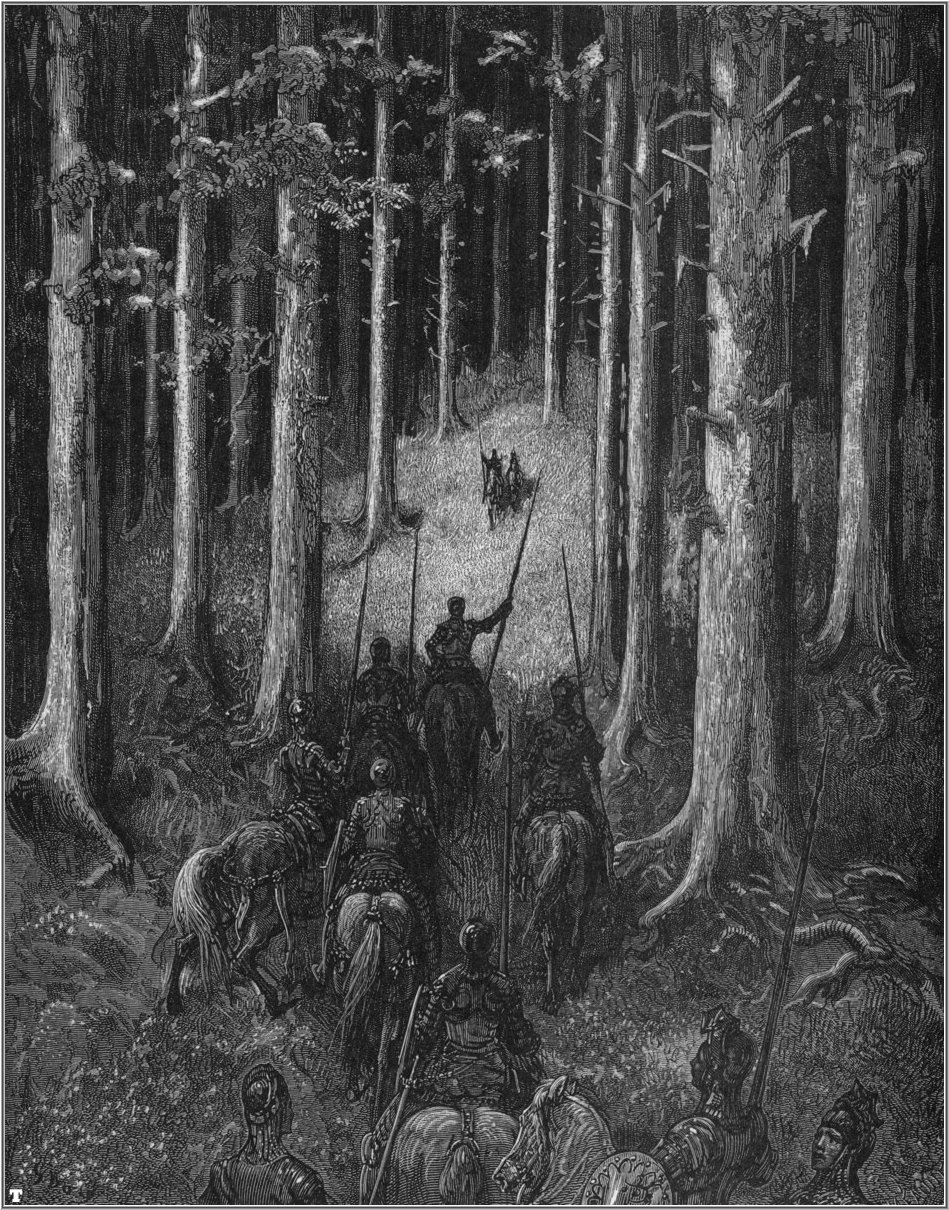|
David Aubert
David Aubert (before 1413 – working 1449-79) was a French calligrapher who transcribed and adapted courtly romances and chronicles for the court of the Duke of Burgundy. In addition to finely presented works, illuminated at Bruges and other centres, for the Dukes Philip the Good and Charles the Bold and the Duchess Margaret of York, he completed manuscripts for Antoine de Bourgogne and Philippe de Croy. He was the son of the ducal accountant and calligrapher Jean Aubert, and his elder brother worked as an administrator, members of a family with a tradition of public service in the Burgundian court, though his first mention as a scribe in the ducal service dates to 1463, after which he was salaried as a ducal secretary until Philip's death, and seems to have followed, at least some of the time, the very mobile court around the Duchy. In 1469, following the death of Philip the Good, he was an inventory-taker of the late Duke's library. He then produced at least eight manuscr ... [...More Info...] [...Related Items...] OR: [Wikipedia] [Google] [Baidu] |
Aubert Chas Martel
This surname has Anglo-Saxon pre-8th century origins; spelling variations include Albert, Albertson and Alberts in English names. It is derived from the Old German compound 'Aedelbeort' meaning 'noble-bright'. However, many sources show it as a French surname, with many spelling variations on the French form. It is now found in many locations of the world, spread by French Huguenot refugees, amongst others. Notable people with this surname include the following: * Abbé Aubert (1731–1814), French playwright, poet and journalist * Louis Aubert (painter) (1720 – ), painter and composer * Alexander Aubert, English merchant * Alvin Aubert (1930–2014), American poet * Anaïs Aubert, known as Mademoiselle Anaïs (1802–1871), French actress * Andreas Aubert (art historian), Norwegian art historian * Aristide Aubert Du Petit Thouars, French naval officer * Arnaud Aubert, Catholic Chamberlain * Étienne Aubert, later became Pope Innocent VI * Aubert of Avranches, bishop of Avra ... [...More Info...] [...Related Items...] OR: [Wikipedia] [Google] [Baidu] |
Royal Library Of Belgium
The Royal Library of Belgium (french: Bibliothèque royale de Belgique, nl, Koninklijke Bibliotheek van België, abbreviated ''KBR'' and sometimes nicknamed in French or in Dutch) is the national library of Belgium. The library has a history that goes back to the age of the Dukes of Burgundy. In the second half of the 20th century, a new building was constructed on the Mont des Arts/Kunstberg in central Brussels, near the Central Station. The library owns several collections of historical importance, like Library of the Dukes of Burgundy, and is the depository for all books ever published in Belgium or abroad by Belgian authors. There are four million bound volumes in the Royal Library, including a rare book collection numbering 45,000 works. The library has more than 750,000 prints, drawings and photographs, 150,000 maps and plans, and more than 250,000 objects, from coins to scales to monetary weights. This coin collection holds one of the most valuable coins in the field of ... [...More Info...] [...Related Items...] OR: [Wikipedia] [Google] [Baidu] |
Medieval European Scribes
In the history of Europe, the Middle Ages or medieval period lasted approximately from the late 5th to the late 15th centuries, similar to the post-classical period of global history. It began with the fall of the Western Roman Empire and transitioned into the Renaissance and the Age of Discovery. The Middle Ages is the middle period of the three traditional divisions of Western history: classical antiquity, the medieval period, and the modern period. The medieval period is itself subdivided into the Early, High, and Late Middle Ages. Population decline, counterurbanisation, the collapse of centralized authority, invasions, and mass migrations of tribes, which had begun in late antiquity, continued into the Early Middle Ages. The large-scale movements of the Migration Period, including various Germanic peoples, formed new kingdoms in what remained of the Western Roman Empire. In the 7th century, North Africa and the Middle East—most recently part of the Eastern Roman ... [...More Info...] [...Related Items...] OR: [Wikipedia] [Google] [Baidu] |
Arts In The Court Of Philip The Good
The arts are a very wide range of human practices of creative expression, storytelling and cultural participation. They encompass multiple diverse and plural modes of thinking, doing and being, in an extremely broad range of media. Both highly dynamic and a characteristically constant feature of human life, they have developed into innovative, stylized and sometimes intricate forms. This is often achieved through sustained and deliberate study, training and/or theorizing within a particular tradition, across generations and even between civilizations. The arts are a vehicle through which human beings cultivate distinct social, cultural and individual identities, while transmitting values, impressions, judgments, ideas, visions, spiritual meanings, patterns of life and experiences across time and space. Prominent examples of the arts include: * visual arts (including architecture, ceramics, drawing, filmmaking, painting, photography, and sculpting), * literary arts (incl ... [...More Info...] [...Related Items...] OR: [Wikipedia] [Google] [Baidu] |
Simon Marmion
Simon Marmion (c. 1425 – 24 or 25 December 1489) was a French and Burgundian Early Netherlandish painter of panels and illuminated manuscripts. Marmion lived and worked in what is now France but for most of his lifetime was part of the Duchy of Burgundy in the Southern Netherlands. Life Like many painters of his era, Marmion came from a family of artists, and both his father, Jean, and his brother Mille were painters. Marmion is recorded as working at Amiens between 1449 and 1454, and then at Valenciennes from 1458 until his death. He was patronized by Philip the Good, the Duke of Burgundy from 1454 when he was one of several artists called to Lille to work on the decorations for the Feast of the Pheasant. He was employed by several members of the ducal family, including Charles the Bold and Margaret of York. He was called "the prince of illuminators" by a near contemporary. Three years after his death his widow, Jeanne de Quaroube, married his pupil, the painter Jan Provoost ... [...More Info...] [...Related Items...] OR: [Wikipedia] [Google] [Baidu] |
Getty Museum
The J. Paul Getty Museum, commonly referred to as the Getty, is an art museum in Los Angeles, California housed on two campuses: the Getty Center and Getty Villa. The Getty Center is located in the Brentwood neighborhood of Los Angeles and features pre-20th-century European paintings, drawings, illuminated manuscripts, sculpture, decorative arts, and photographs from the inception of photography through present day from all over the world. The original Getty museum, the Getty Villa, is located in the Pacific Palisades neighborhood of Los Angeles and displays art from Ancient Greece, Rome, and Etruria. History In 1974, J. Paul Getty opened a museum in a re-creation of the Villa of the Papyri at Herculaneum on his property in Malibu, California. In 1982, the museum became the richest in the world when it inherited US$1.2 billion. In 1983, after an economic downturn in what was then West Germany, the Getty Museum acquired 144 illuminated medieval manuscripts from the ... [...More Info...] [...Related Items...] OR: [Wikipedia] [Google] [Baidu] |
The Visions Of Tondal
The Getty Tondal, also known as ''Les visions du chevalier Tondal'' is an illuminated manuscript from 1475, now in the Getty Museum. It is a French version and is the only surviving fully illuminated manuscript of the ''Visio Tnugdali.'' It has 20 miniatures by Simon Marmion and elaborate borders with "CM" for the initials of Margaret of York, Duchess of Burgundy and her husband Charles the Bold. The text was scribed by David Aubert in Ghent, while the miniatures were done in Valenciennes, where Marmion was based. Only the fifteen pages with two-column miniatures and five pages with single column miniatures have borders. There are only 45 folios, meaning that most have miniatures. The manuscript is fully available online. History Origin The Getty Tondal was commissioned by Margaret of York, Duchess of Burgundy during the 1470s. During this time she had other works she requested or collected for her own personal reading quarters. She was one of the most powerful women of her t ... [...More Info...] [...Related Items...] OR: [Wikipedia] [Google] [Baidu] |
Jean De Créquy
Jean may refer to: People * Jean (female given name) * Jean (male given name) * Jean (surname) Fictional characters * Jean Grey, a Marvel Comics character * Jean Valjean, fictional character in novel ''Les Misérables'' and its adaptations * Jean Pierre Polnareff, a fictional character from ''JoJo's Bizarre Adventure'' Places * Jean, Nevada, USA; a town * Jean, Oregon, USA Entertainment * Jean (dog), a female collie in silent films * "Jean" (song) (1969), by Rod McKuen, also recorded by Oliver * ''Jean Seberg'' (musical), a 1983 musical by Marvin Hamlisch Other uses * JEAN (programming language) * USS ''Jean'' (ID-1308), American cargo ship c. 1918 * Sternwheeler Jean, a 1938 paddleboat of the Willamette River See also *Jehan * * Gene (other) * Jeanne (other) * Jehanne (other) * Jeans (other) * John (other) John is a common English name and surname: * John (given name) * John (surname) John may also refer to: New Testa ... [...More Info...] [...Related Items...] OR: [Wikipedia] [Google] [Baidu] |
Fierabras
Fierabras (from French: ', "brave/formidable arm") or Ferumbras is a fictional Saracen knight (sometimes of gigantic stature) appearing in several '' chansons de geste'' and other material relating to the Matter of France. He is the son of Balan, king of Spain, and is frequently shown in conflict with Roland and the Twelve Peers, especially Oliver, whose prowess he almost rivals. Fierabras eventually converts to Christianity and fights for Charlemagne. Texts and adaptations The oldest extant text of the story of Fierabras is a 12th-century (c. 1170) Old French ''chanson de geste'' of roughly 6,200 alexandrinesHasenohr in assonanced laisses. The story is as follows: the Saracen king Balan and his son Fierabras return to Spain after sacking the church of Saint Peter's in Rome and taking the relics of the passion. Charlemagne invades Spain to recover the relics and sends his knight Olivier de Vienne, Roland's companion, to battle Fierabras. Once defeated, the giant decides ... [...More Info...] [...Related Items...] OR: [Wikipedia] [Google] [Baidu] |
Bibliothèque De L'Arsenal
The Bibliothèque de l'Arsenal (''Library of the Arsenal'', founded 1757) in Paris has been part of the Bibliothèque nationale de France since 1934. History The collections of the library originated with the private library of Marc-René, 3rd marquis d'Argenson (1722–1787), installed in 1757 in the residence of the Grand Master of the Artillery, at the heart of the ancient Arsenal of Paris. The Arsenal itself was founded by King François I in the 16th century, later rebuilt by Sully, and expanded by the architect Germain Boffrand in the 18th century. Paulmy had assembled a magnificent collection, particularly rich in medieval manuscripts and prints. In 1786 he also acquired the collection of the duc de la Vallière, but then sold the entire library to the comte d'Artois. The library was sequestered by the state during the French Revolution, and was greatly expanded by many valuable items seized from the abbeys of Paris and also by the archives of the Bastille. On 28 ... [...More Info...] [...Related Items...] OR: [Wikipedia] [Google] [Baidu] |
Renaud De Montauban
Renaud de Montauban (; also spelled ''Renaut'', ''Renault'', Italian: ''Rinaldo di Montalbano'', Dutch: ''Reinout van Montalba(e)n'') was a legendary hero and knight which appeared in a 12th-century Old French ''chanson de geste'' known as ''The Four Sons of Aymon''. The four sons of Duke Aymon are Renaud, Richard, Alard and Guiscard, and their cousin is the magician Maugris (French: ''Maugis'', Italian: ''Malagi'', ''Malagigi''). Renaud possesses the magical horse Bayard and the sword Froberge (Italian: ''Fusberta'', ''Frusberta'', French: ''Flamberge''). The story of Renaud was popular across Europe. The tale was adapted into Dutch, German, Italian and English versions throughout the Middle Ages, inspired the Old Icelandic '' Mágus saga jarls'', and also incited subsequent sequels and related texts that form part of the Doon de Mayence cycle of ''chansons''. Renaud, as Rinaldo, is an important character in Italian Renaissance epics, including ''Morgante'' by Luigi Pulci, ''Orl ... [...More Info...] [...Related Items...] OR: [Wikipedia] [Google] [Baidu] |
Perceforest
''Perceforest'' or ''Le Roman de Perceforest'' is an anonymous prose chivalric romance, written in French around 1340, with lyrical interludes of poetry, that describes a fictional origin of Great Britain and provides an original genesis of the Arthurian world. The lengthy work in six books takes its inspiration from the works of Geoffrey of Monmouth, Wace, Orosius and Bede, the Lancelot-Grail cycle, the Alexander Romance genre, Roman historians, medieval travellers, and oral tradition. ''Perceforest'' forms a late addition to the collection of narratives with loose connections both to the Arthurian Romance and the feats of Alexander the Great. Plot An extract from Geoffrey of Monmouth's ''History of the Kings of Britain'' serves as a preface, in which refugees from Troy flee to the island of Britain, and establish a new kingdom. Unlike in Geoffrey's narrative, however, that dynasty eventually produces a series of weak rulers who usher their kingdom into decline. Alexander of Mac ... [...More Info...] [...Related Items...] OR: [Wikipedia] [Google] [Baidu] |

_-_KBR_27-8-2016_11-33-21.jpg)






